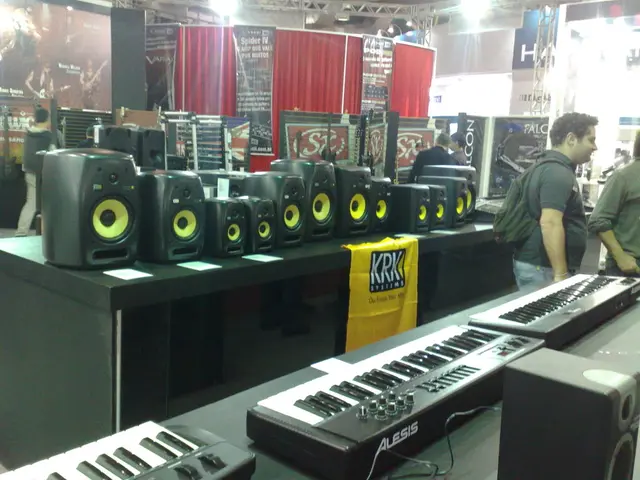Microsoft Develops Early-Stage Analog Optical Computer Prototype
Microsoft has made a significant leap in computational technology with the unveiling of its new Analog Optical Computer (AOC). This innovative device, which incorporates artificial intelligence (AI) capabilities, is set to revolutionise the way complex problems are solved.
The underlying technology of the AOC, shunting photons along fiber optic cables, is not new. In fact, it dates back several decades. However, the research team at Microsoft, led by Yichen Shen, has managed to breathe new life into this old technology, creating a device that is not only practical but also highly efficient.
The AOC is designed to be durable and operate at room temperature, making it a practical solution for a wide range of applications. Moreover, it is 100 times faster and 100 times more energy efficient than conventional hardware for certain problems. This makes it an attractive option for industries that require rapid and efficient computational solutions.
One of the key improvements in the new AOC is the increase in the number of weights from 64 in the previous generation to 256. This increase allows the AOC to tackle more complex problems, broadening its potential applications.
Francesca Parmigiani, the Microsoft principal research manager, has stressed that the AOC is not a general-purpose computer. Instead, it is believed to have a wide range of applications for solving real-world problems, particularly optimization challenges in logistics, finance, and healthcare.
The prototype of the AOC is built from commercially available parts, including micro-LEDs, optical lenses, and sensors from smartphone cameras. As researchers refine the AOC, they could potentially increase the number of micro-LEDs, potentially increasing the number of weights to millions or even more than a billion.
The AOC uses light as a medium to solve complex problems. It performs operations such as addition and multiplication using different light intensities. This unique approach could pave the way for a new era in computational technology, one that leverages the power of light to solve the world's most complex problems.
In conclusion, the new Analog Optical Computer from Microsoft is a significant step forward in computational technology. Its AI capabilities, combined with its efficiency and practicality, make it a promising solution for a wide range of industries. As researchers continue to refine the AOC, we can expect to see its potential applications grow, potentially transforming the way we solve complex problems in the future.








